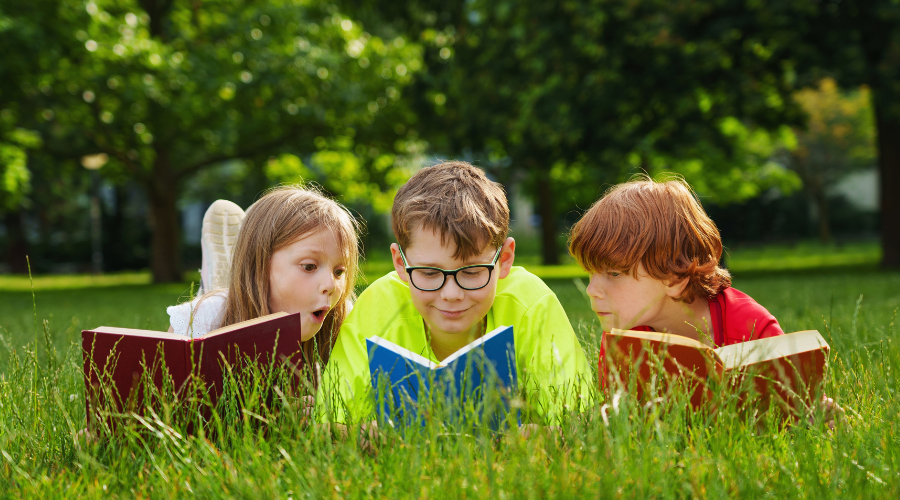
The Politics of Voice: Connecting IPCC Climate Science with Indigenous Knowledge
28 July 2025
Integrating Climate Science and Traditional Ecological Knowledge for Enhanced Climate Action
28 July 2025By Anna ABRAHAM
Educating children about climate change is a key step in evoking climate action. While youth climate groups such have organised global climate strikes under the banner of “People Not Profit”,[i] there is still much more to do to impart meaningful climate education and awareness among children. Mainstreaming these ideas remains the issue.
A study shows that children’s understanding of climate breakdown is isolated to the consequences of climate change and not on the causes of the problem or the concept itself. It revealed that children were particularly interested in how this planetary crisis began.[ii]
The challenge is making the roots of climate change and climate action palatable to a child’s mind. How do we break down concepts of systemic thinking[iii], collective action, sufficiency[iv] and capitalism[v] so that even a 5-year-old can grasp it?
Bedtime stories can be a great tool to enable such critical thinking on climate change. They can play a fundamental role in shaping a child’s understanding of the world. These stories, especially fairy tales, aid in development, understanding ideas, and even influence values and belief systems.[vi] The goal is not to help children memorise terms and theories – but for them to understand the patterns and ideas that caused such a crisis.
Dr Seuss’ The Lorax is a great example illustrating the consequences of industrialization and greed-driven capitalism through the Once-ler’s exploitation of nature, symbolised by the Truffula trees, leading to biodiversity loss, reflecting real-world impacts of climate change and unsustainable resource extraction.[vii]
Carole Lindstrom’s We Are Water Protectors is another book that illustrates indigenous people’s role in conservation and the importance of safeguarding waters from harm and corruption. The book masterfully represents an oil pipeline as a black snake, helping children make sense of a complex idea.[viii]
Another important aspect to consider is managing fears in bedtime stories. In classic bedtime tales, monsters aren’t usually defeated violently; instead, they’re transformed or reimagined. This approach resonates with children, who prefer positive imagination to handle their fears.[ix] A similar thinking must be applied to the villains in bedtime stories about climate change, while also providing clear action plans to arrive at a point of resolution.
[i] ‘Global Climate Strike #PeopleNotProfit’, Fridays For Future, 25 January 2022, https://fridaysforfuture.org/march25/.
[ii] Zara Teixeira et al., ‘What Children Know and Want to Know about Climate Change: A Prior-Knowledge Self-Assessment’, Environmental Education Research 0, no. 0 (13 January 2024): 1–26, https://doi.org/10.1080/13504622.2024.2309581.
[iii] OECD and International Institute for Applied Systems Analysis, Systemic Thinking for Policy Making: The Potential of Systems Analysis for Addressing Global Policy Challenges in the 21st Century, ed. William Hynes, Martin Lees, and Jan Marco Müller, New Approaches to Economic Challenges (OECD, 2020), https://doi.org/10.1787/879c4f7a-en.
[iv] ‘IPCC Sixth Assessment Report – Working Group III: Mitigation of Climate Change’ (IPCC, 2022), https://www.ipcc.ch/report/ar6/wg3/downloads/report/IPCC_AR6_WGIII_FullReport.pdf.
[v] Jonathan T. Park, ‘Climate Change and Capitalism’ 14, no. 2 (2015): 189–206, https://doi.org/10.7916/D86H4H4K.
[vi] Leilani VisikoKnox-Johnson, ‘The Positive Impacts of Fairy Tales for Children’, 2016, https://www.semanticscholar.org/paper/The-Positive-Impacts-of-Fairy-Tales-for-Children-VisikoKnox-Johnson/283af6f77bded5ca50fddfbb3a6645bae82af5de.
[vii] Seuss, The Lorax (New York: Robin Corey Books, 2012).
[viii] Carole Lindstrom, We Are Water Protectors (Roaring Brook Press, 2020).
[ix] Mary-Louise Maynes, ‘Monsters at Bedtime: Managing Fear in Bedtime Picture Books for Children’, Humanities and Social Sciences Communications 7, no. 1 (12 August 2020): 1–7, https://doi.org/10.1057/s41599-020-00561-4.


